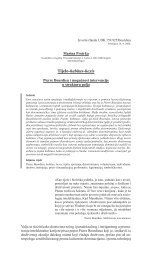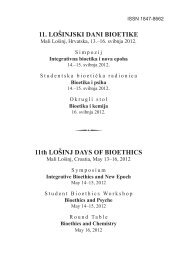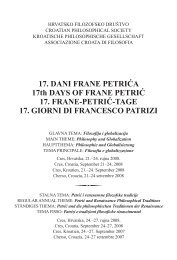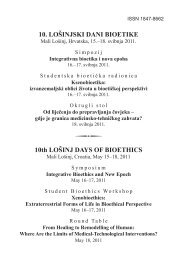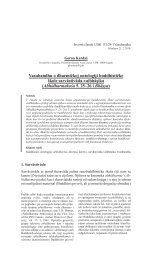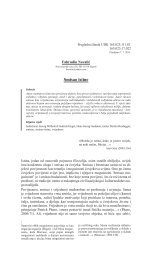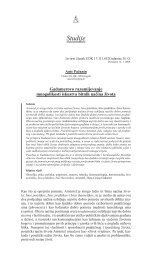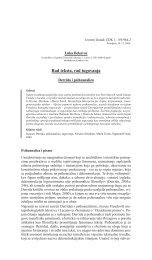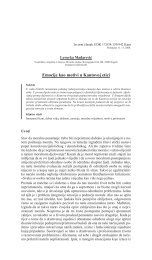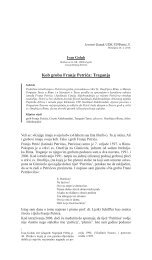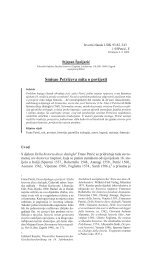Programska knjižnica 9. Lošinjskih dana bioetike - Hrvatsko ...
Programska knjižnica 9. Lošinjskih dana bioetike - Hrvatsko ...
Programska knjižnica 9. Lošinjskih dana bioetike - Hrvatsko ...
You also want an ePaper? Increase the reach of your titles
YUMPU automatically turns print PDFs into web optimized ePapers that Google loves.
deadheading of seasonal flowers and perennial plants in order to prolong<br />
the flowering season.<br />
From the literature and practical experience we can define topiary as<br />
the taming the natural habitus of shrubs and trees. Usually, evergreens and<br />
conifers are used, slow-growing and dens-growing plants primarily with<br />
smaller leaves and needles that can withstand hard (aggressive) pruning.<br />
Keen topiary lovers consider it as the art of shaping the plants to achieve<br />
a visually interesting look. Although the geometrical shapes are the favorite<br />
ones (being the easiest to create) there are some very complicated<br />
(demanding) shapes, as the ornamental and imaginative shapes of animals<br />
or humans, when the fantasy is limited only by skill of the artist (gardener)<br />
and the plant capacity. Even though it may seem that topiary is a modern<br />
technique of art expressing through the living material its history reaches<br />
back to the age of the ancient Rome as a style of landscape architecture<br />
and was even intensified at the age of renaissance at the French and Italian<br />
landscapes, and in England during the Victorian time. Recently, a long<br />
history of topiary technique even experiences some aspects of its own renaissance.<br />
In the eternal struggle for the longest flowering season possible,<br />
that pleases the human eye, deadheading is done instantly after fading of<br />
flowers, including the ovary, in order to prevent the development of seed<br />
and to force the plants to grow intensely and to flower again.<br />
By forced pruning, within a strictly desired shape, parts of plants<br />
(branches and leaves – their organs) are constantly cut off and thrown away.<br />
At the same time, the plants are violently “castrated” in order to prevent<br />
flowering and transfer of their genetic code. By permanent deadheading of<br />
fading seasonal and perennial plants, we forcibly stop the development of<br />
seed, i.e. we do “abortions” on these kinds of ornamental plants. Who is<br />
entitled to do such a thing?<br />
Being overpowering in so many aspects, we carelessly cut of branches,<br />
leaves and flowers – the organs on the living plants – for the sake our own<br />
enjoy. Plants do not move so they can not run away, plants do not speak<br />
so they can not protect themselves, but that does not necessarily mean that<br />
they do not feel. As a conclusion, we need to speak out for the protection of<br />
plants thus enabling their full genetic development and preventing forcible<br />
castration and abortion.<br />
Is there an alternative? Fortunately there is. We plead for using the<br />
kind of plants with specific habitus (forms, growth structure, colour, shape,<br />
100



